
by Danielle S. Williams | Oct 3, 2025
Peanuts, also known as groundnuts, earthnuts or goobers have a long history of cultivation. Unlike tree nuts, peanuts are grown underground which is how they earned the nicknames groundnut or earthnut. Originally native to South America, peanuts made their way to North America from Africa, where they were introduced by African slaves in the early 1800’s.
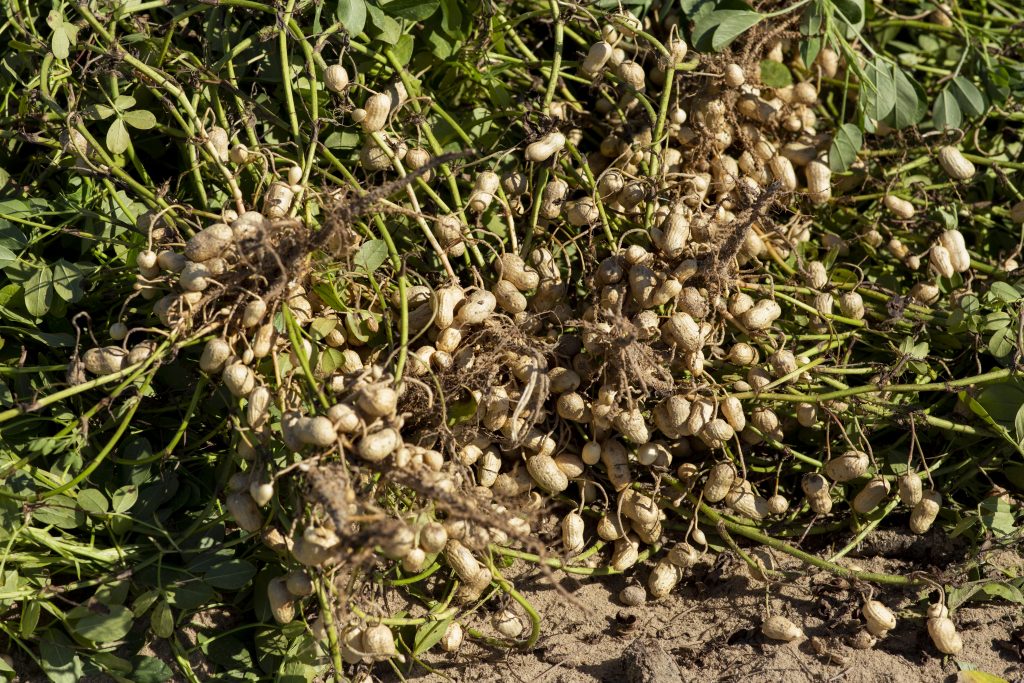
Overturned peanuts in a field ready to be harvested. UF/IFAS Photo by Tyler Jones
First grown in Virginia, peanuts were grown mainly for oil, food, and as a cocoa substitute. During this time, they were regarded as food for livestock and the poor. It wasn’t until the late 1800’s did their demand increase as there was a need for an affordable, high-protein food during the Civil War and World Wars. Their popularity also increased when showman, P.T. Barnum began selling hot roasted peanuts at his traveling circuses.
In the 1900’s, peanuts became a significant agricultural crop when the cotton boll weevil threatened the South’s cotton crop. Through the research findings and suggestions of Dr. George Washington Carver, peanuts were grown as a successful cash crop and contributed greatly to the sustainability of the farm. Though Dr. Carver did not invent peanut butter, he did invent more than 300 new uses for the peanut and peanut byproducts including shaving cream, leather dye, coffee, ink and shoe polish.
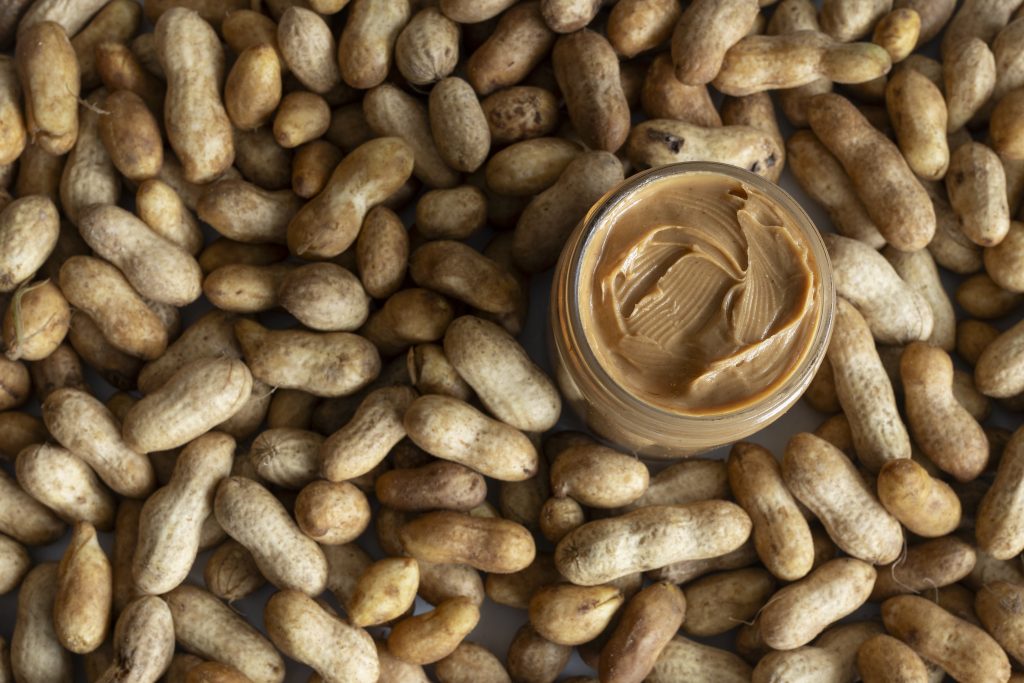
Jar of peanut butter surrounded by loose shelled peanuts. UF/IFAS Photo by Tyler Jones
Today, peanuts are grown in 13 states, across the United States and the U.S. is the third largest producer of peanuts in the world. In 2024, Florida harvested 157,000 acres of peanuts, averaging about 3,500 pounds per acre with a production value of roughly $149.5 million (Annual Crop Production 01/10/2025).
Peanut Fun Facts:
- 99% of peanut farms are family-owned, businesses averaging 200 acres
- There are four different types of peanuts – Runner, Valencia, Spanish and Virginia
- Peanut plants are legumes and fix beneficial nitrogen back into the soil
- Peanut butter is an excellent source of niacin, and a good source of vitamin E and magnesium
- Peanuts do not contain cholesterol and are low in saturated fat
- Peanut butter accounts for half of all peanuts eaten in the U.S.
- It takes about 540 peanuts to make a 12-ounce jar of peanut butter
- There are enough peanuts in one acre to make 35,000 peanut butter and jelly sandwiches
- The average person will eat almost 3,000 peanut butter and jelly sandwiches in their lifetime
- Women and children prefer creamy peanut butter, while most men opt for chunky
- Peanut allergies affect about 1.8% of U.S. children and 1.1% of adults the U.S. population
UF/IFAS Peanut Butter Challenge
Help us fight hunger by donating unopened, unexpired jars of peanut butter to the Peanut Butter Challenge! Every year UF/IFAS Extension Offices across the state coordinate the Peanut Butter Challenge to address hunger and food insecurity in our area. You can support the challenge and help fight hunger by donating unopened, unexpired jars of peanut butter, now through October 31st, 2025 to your local UF/IFAS Extension office. Thanks to support from the Florida Peanut Producers Association and the Florida Peanut Federation, your peanut butter donations go even further!
by Danielle S. Williams | Aug 28, 2025
Persimmons are an increasingly popular fruit crop in North Florida that are prized for their rich flavor, vibrant color, and adaptability to the state’s climate. With varieties ranging from astringent to non-astringent, persimmons offer growers and consumers a diverse and delicious harvest. Persimmons thrive in well-drained soils and require minimal pest management, making them an attractive crop for both commercial and backyard growers.
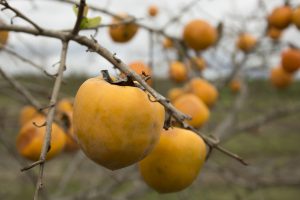
Persimmons. Photo by Tyler Jones, UF IFAS
To help growers, home gardeners, landowners, and enthusiasts learn more about persimmons, UF/IFAS Extension is hosting the 2025 Persimmon Field Day on Thursday, October 23rd from 8:45AM to 11:30AM EST at the UF/IFAS North Florida Research and Education Center (NFREC), located at 155 Research Road, Quincy, FL.
Attendees will:
- Tour the NFREC’s persimmon grove to learn about tree care, maintenance, and harvesting techniques
- Sample a variety of persimmon cultivars
- Connect with experts and fellow growers
Light refreshments will be provided. Space is limited, so please register using the link below to reserve your spot!
For more information, please contact Muhammad Shahid at 850-875-7150 or via e-mail at mshahid@ufl.edu
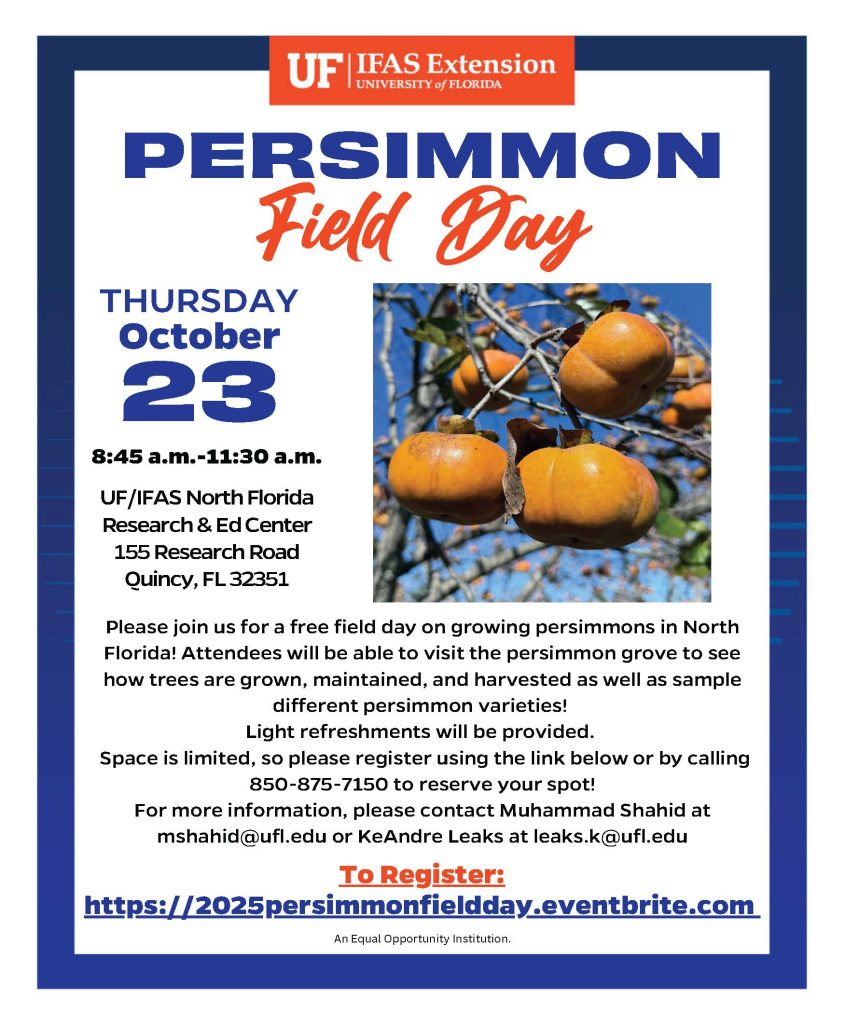
The University of Florida is committed to providing universal access to all our events. For disability accommodations such as sign language interpreters and listening devices, please contact Muhammad Shahid, (mshahid@ufl.edu, 850-875-7255) at least 2 weeks in advance. Advance notice is necessary to arrange for some accessibility needs.
by Danielle S. Williams | Jul 20, 2025
Black-eyed Susan, Rudbeckia hirta, is a yellow wildflower commonly found throughout Florida. It is easily recognized by its golden yellow petals and dark brown center or its signature “black eye”. Not only is black-eyed Susan a beautiful addition to any landscape or garden, but it is also beneficial to pollinators and easy to care for! A win, win for gardeners alike!
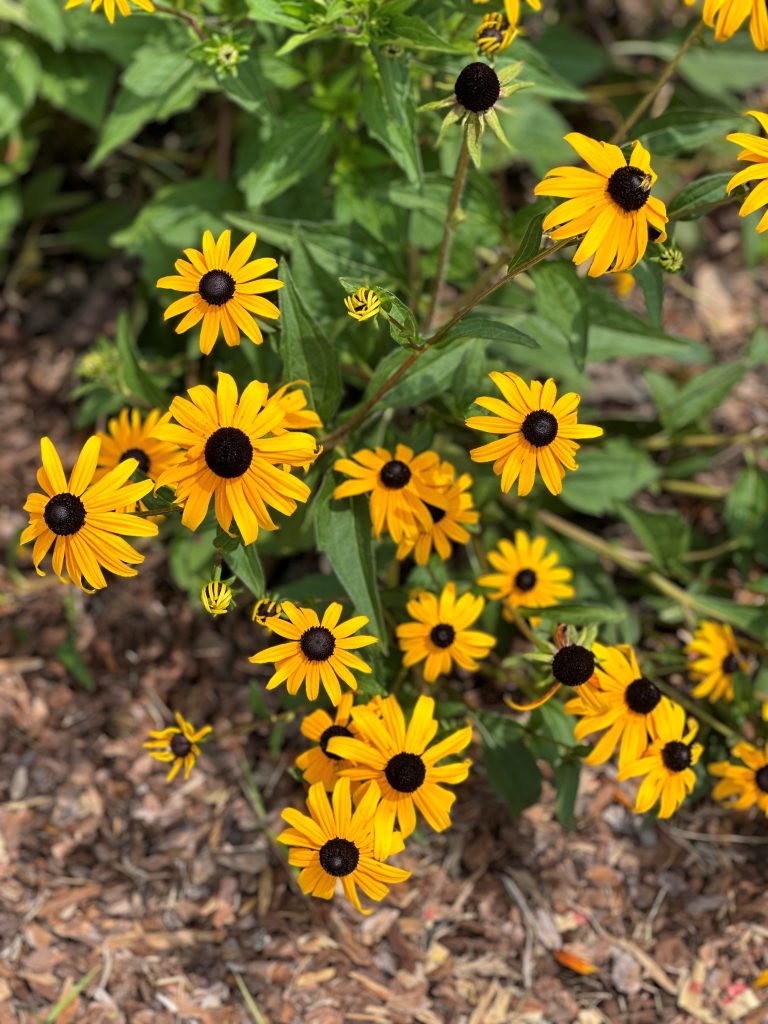
As a native wildflower to much of the eastern and central United States, Black-eyed Susan plays an important role in supporting local ecosystems. It provides pollen and nectar to a wide variety of pollinators such as native bees, butterflies, hoverflies, and other beneficial insects. Its long blooming season provides a food source to support these species during the hot summer months when many other plants are not blooming.
One of the greatest appeals of Black-eyed Susan is its versatility. It can be grown in full sun and well-drained soil but will tolerate poor soil, drought and even some shade. After establishment, it requires minimal care and returns each year.
Growing Considerations:
- USDA Hardiness Zones 2-11
- Soil pH range: 6.0-7.2
- Soil tolerances: clay; sand; acidic; loam
- Plant spacing: 12 – 28 inches
- Moderate drought tolerance
- Flowering months: May – October
- Growth height: 1-3 feet
If you’re looking for a resilient, beautiful, pollinator-friendly flower that brings bold color during the summer and is easy to care for, Black-eyed Susan is a great option!
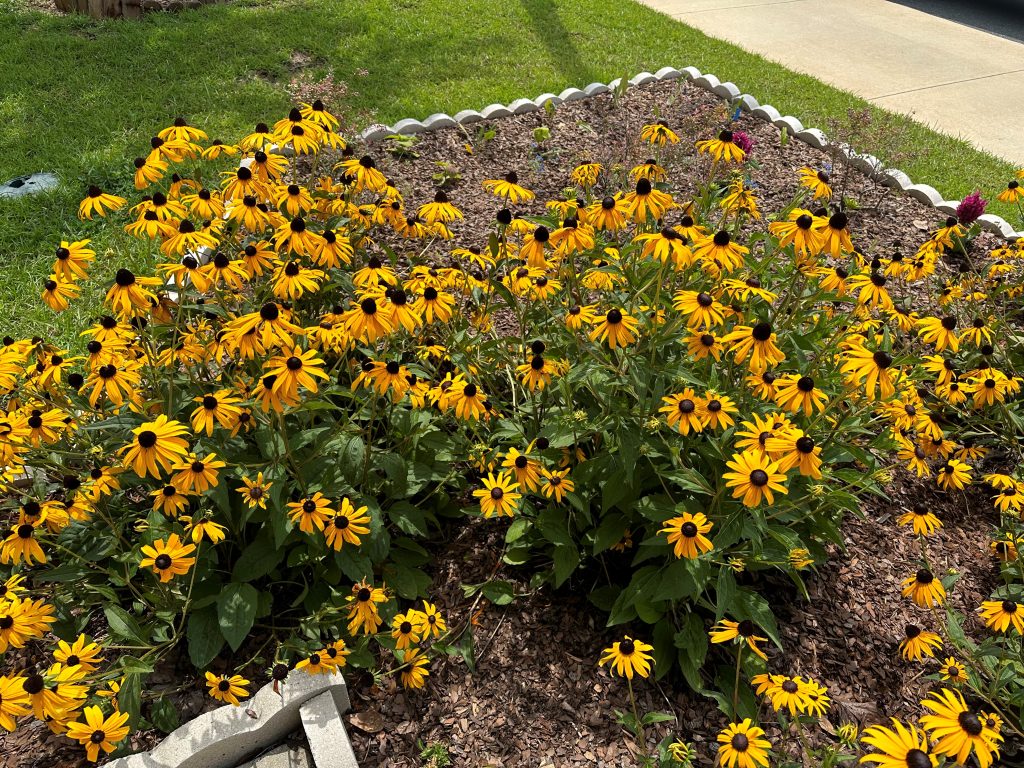
by Danielle S. Williams | Jun 5, 2025
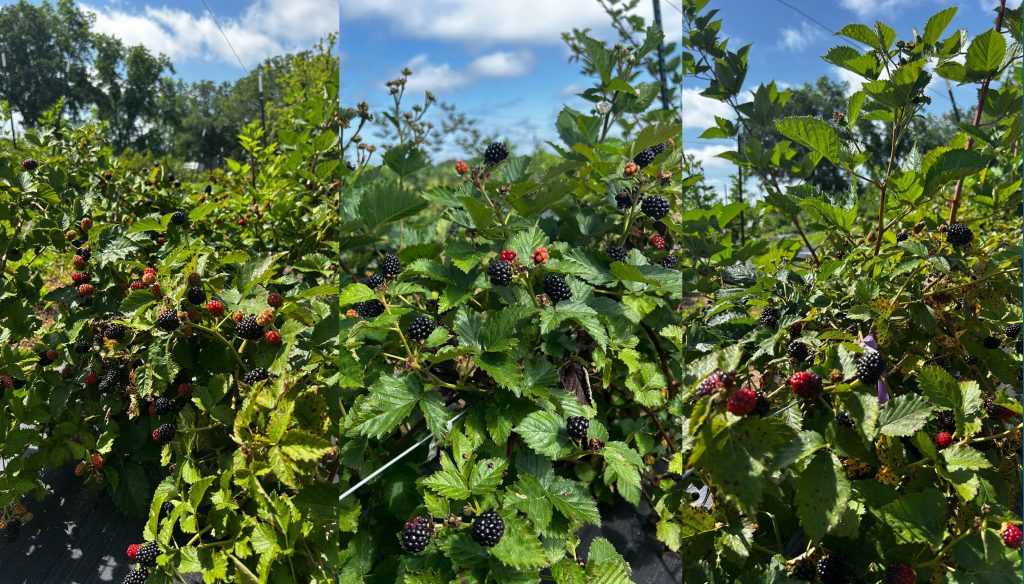
Blackberries grown in North Florida. Photo credit: Dr. Shahid Iqbal
Blackberries are a deciduous crop that thrive in temperate climates. While several native blackberry species grow wild in Florida, their small fruit size, late maturation, and low yields make them unsuitable for commercial production. Historically, cultivated blackberry varieties in Florida, have been primarily limited to homeowner production, but, UF/IFAS researchers are working to change that. Through the development of improved cultivars with higher yields, better flavor, and little to no chilling hour requirements, blackberries are becoming a more viable option for commercial and small-scale growers in North Florida.
UF/IFAS invites you to learn more about blackberries and the current research associated with blackberry production at the Blackberry Field Day, on Wednesday, June 18th. This event will be held from 8:30 – 11:30AM Eastern Time, at the UF/IFAS North Florida Research & Education Center (NFREC), located at 155 Research Road, Quincy, Florida.
This is a free event aimed at educating home gardeners, farmers, landowners, and industry representatives about production practices such as proper planting, pruning, and fertilization. Attendees will be able to tour the blackberry planting at the UF/IFAS NFREC as well as sample different blackberry varieties! The field day aims to present attendees with the potential benefits, challenges, and current research associated with growing blackberries in North Florida.
Attendees will be able to visit the blackberry planting at UF/IFAS North Florida Research & Education Center in Quincy. Light refreshments will be provided. Space is limited, so please register using the link below or by calling 850-875-7255 to reserve your spot!
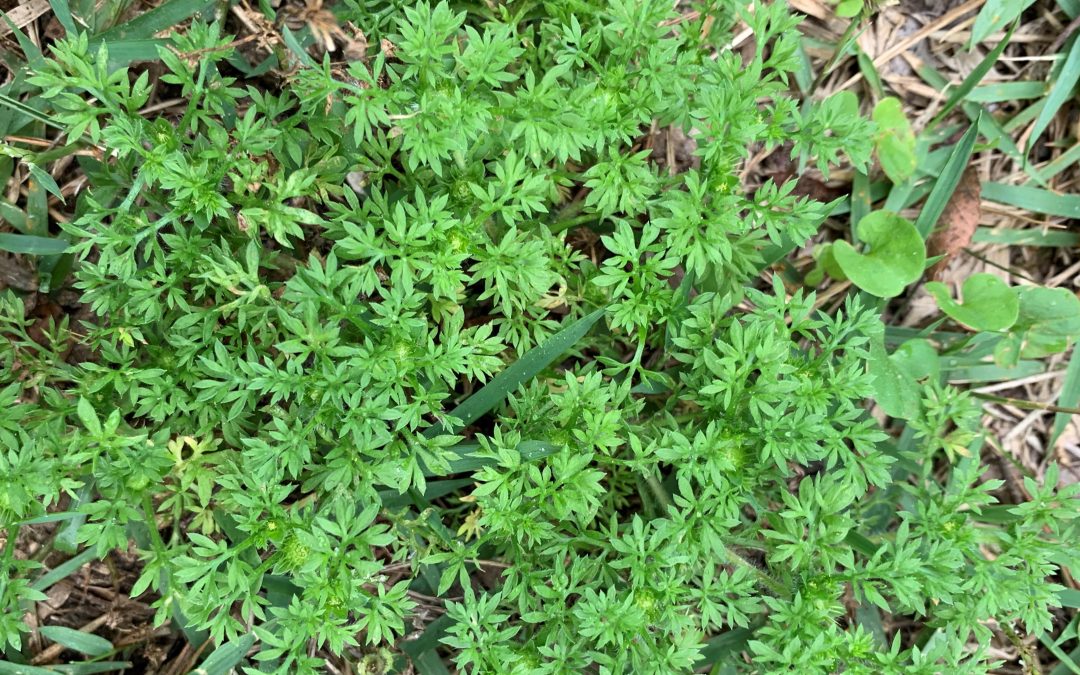
by Danielle S. Williams | Apr 21, 2025
If you’ve ever walked barefoot through a patch of burweed, you know this is a very unpleasant experience. Lawn burweed, also called spurweed or stickerweed, is a low growing winter annual that produces hard, spiny burs that contains the plant’s seeds. These burs or stickers make walking on grass extremely painful for not only people walking barefoot, but pets as well.

Lawn Burweed. Photo: Danielle Williams.
Dealing with lawn burweed can be tricky. Because lawn burweed is a winter weed, seeds actually germinate when temperatures are cool in the fall (late October-November). It then remains unseen during the cold months but as temperatures warm up in the spring, lawn burweed initiates a period of rapid growth and forms the spiny burs which may be hard to see but are easily felt. At this stage, the plant has set seed for next year and killing the remaining foliage won’t remove the burs. Moving forward, there are some things to consider.
Cultural Control
Burweed tends to be prominent in high traffic areas or areas where grass is declining so it is important to prevent infestations by maintaining a healthy, dense lawn. This can be achieved by fertilizing and liming according to soil test results as well as mowing at the proper height and frequency for your specific turfgrass. A healthy lawn can outcompete burweed for light, water, and nutrients and reduce the level of burweed infestation. For more information on maintaining your lawn visit: https://hort.ifas.ufl.edu/yourfloridalawn/
If burweed is only in isolated areas, you can always dig it up and dispose of it. Be sure to wear gloves and watch out for the stickers!
Chemical Control
Post-emergent control: Post-emergent herbicides are most effectively applied when burweed plants are young, actively growing, and haven’t set burs yet from December – February. Controlling burweed now is not impossible, but the burs have likely already formed and will remain present even after the weed dies. Additionally, since burweed is a winter annual, it will begin to die as temperatures reach 90 ◦F and above.
Look for herbicides containing the following active ingredients to help with post-emergent control:
- Atrazine – sold under many brand names and safe in centipede, St. Augustine, and bermudagrass. Do not use in zoysiagrass or bahiagrass lawns.
- Dicamba, mecoprop, 2,4-D – commonly sold in three-way formulations through many brand names. Generally safe in centipede, St. Augustine, bermuda, zoysia, and bahiagrass lawns.
- Metsulfuron – sold under several brand names and safe in centipede, St. Augustine, zoysia, and bermudagrass. Do not use in bahiagrass. Be careful if used around ornamentals.
- Thiencarbazone, iodosulfuron, dicamba. Safe in centipedegrass, zoysiagrass, bermudagrass, and St. Augustinegrass. Do not use in bahiagrass.
Pre-emergent control: If you are struggling with a lawn burweed infestation this spring, plan to do a pre-emergent herbicide application this fall. A herbicide containing the active ingredient, isoxaben can be used to control lawn burweed in centipedegrass, St. Augustinegrass, bermudagrass and zoysiagrass. In order for a pre-emergent herbicide application to be effective, it must be applied before the plant sprouts. For burweed, isoxaben can be applied in October or once temperatures fall to 55-60 ◦F and winter weeds begin to germinate.
Of course, before using any type of herbicide, always read the label instructions! If you have questions about lawn burweed control, please contact your local Extension Agent.
For more information, please visit: ENH884/EP141: Weed Management Guide for Florida Lawns










